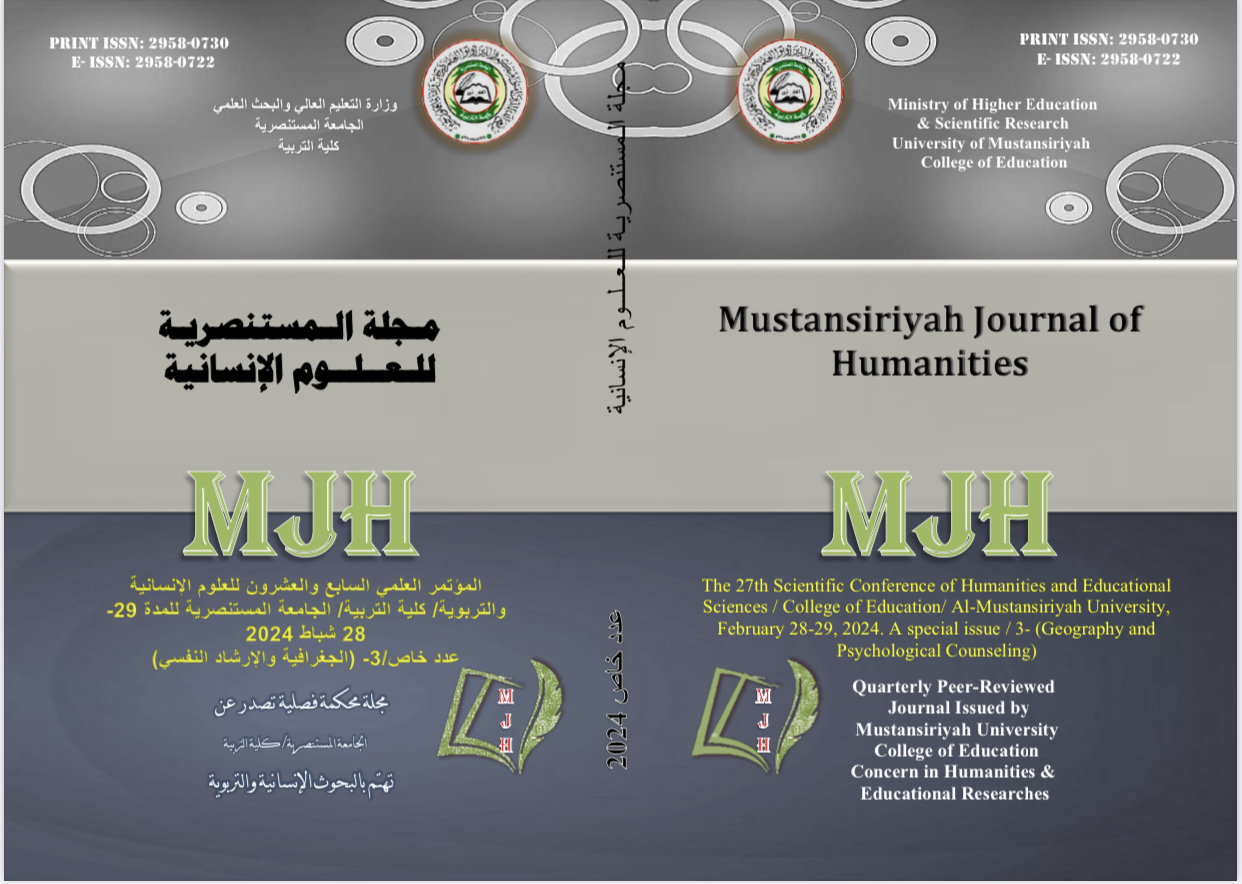The relationship of population growth to the food gap in Iraq "wheat as a model"
DOI:
https://doi.org/10.47831/mjh.v3iخاص.504Keywords:
(relationship, population growth, food gap, wheat, Iraq)Abstract
The research aims to show the type of correlation between the population growth rate in Iraq and the size of the food gap for the wheat crop, based on the analytical descriptive geographical approach in studying the demographic indicators of the growth rates of the population of Iraq and the volume of supply and demand for the wheat crop to clarify the size of the food gap for the period (2000-2021) And thus finding the type of correlation between them, and the research reached results, the most important of which was the decline in the population growth rate in Iraq from 3.4% for the period (1947-1957) to 2.6% for the period (2017-2021), the increase in the amount of demand (consumption) for the wheat crop from 2569 thousand tons in 2000 to 3519 thousand tons in 2021, an increase The amount of wheat production in 2021 compared to the year 2000 significantly from 2569 thousand tons to 4234 thousand tons, respectively, with a production growth rate that increased in 2021 to 9.9% after it was (-2.8%) in 2000. The size of the food gap for wheat decreased between 2000 and 2021 from 529,000 tons to 715,000 tons, respectively, which is A positive indicator that supports the food security of the population of Iraq, the instability of the type of relationship between the rate of population growth in Iraq and the size of the food gap for the wheat crop, so it appears inverse in 2000 and 2005 and then becomes positive in 2010 to return and becomes inverse in 2015 and 2021, the Pearson correlation coefficient between the rate of Population growth and the size of the food gap for wheat in Iraq for the period (2000-2021) (-0.51%), i.e. the relationship in the total is inverse.





